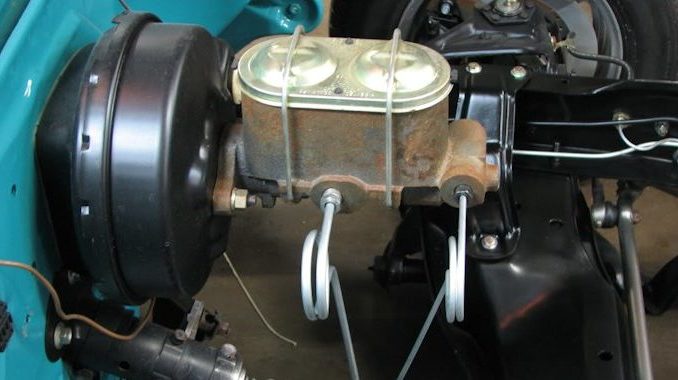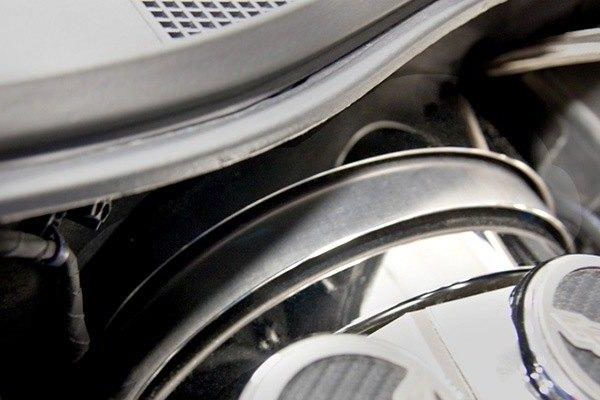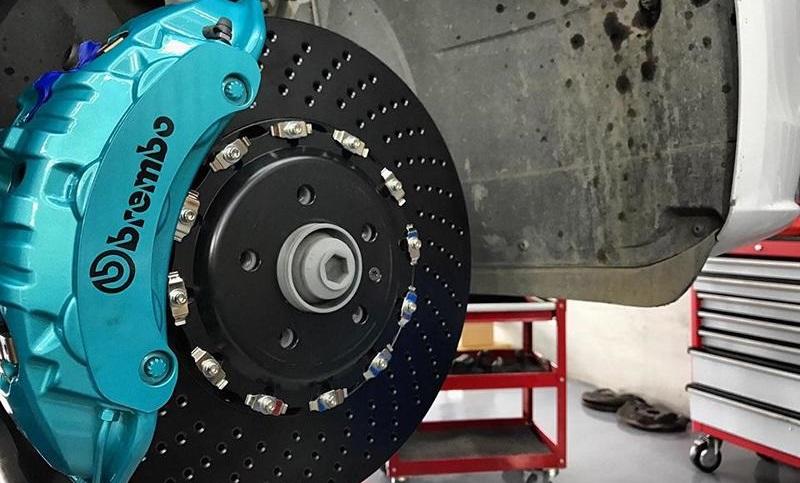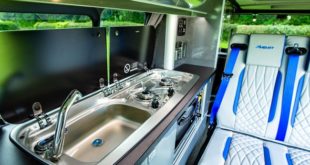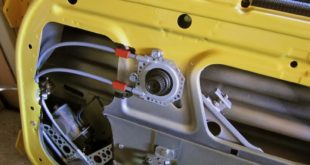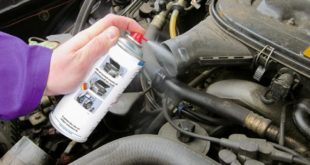Recently updated on January 7, 2022 at 01:02 am
If you want to have your car tuned, you have to pay attention to the brake booster when increasing the performance and other technology tuning. A brake booster conversion for the vehicle may be necessary. The brake booster, or BKV for short, is important in order to achieve an optimal braking effect with little effort. The brake booster achieves an effective braking effect, even when the brake pedal is pressed lightly. Vacuum brake boosters are usually built into cars. The auxiliary force required to boost the brake is achieved by means of a pressure difference (negative pressure). In addition to vacuum variants, pneumatic (compressed air), electrical and hydraulic brake boosters are also known.
Master cylinder change
The brake booster conversion in a car may be necessary if the main brake cylinder is also changed during tuning. Both with and without a brake booster, the brake pedal exerts force directly on the brake master cylinder. The master cylinder, in turn, pushes brake fluid to the brakes. A brake booster provides support and, in the case of the vacuum brake booster, it generates a pressure difference. The pressure difference creates a force that supports the force of the pedal. The pressure difference is small and, in order to generate the optimal braking force, the membrane contained in the brake booster is relatively large. A brake booster therefore requires a large housing (up to 28 cm). If there is not enough space available, which can be the case with smaller cars, then tandem BRPs are also used. The variants are "connected in series" and thus enable a large membrane area.
It is necessary to generate a negative pressure in cars
Cars that have a standard gasoline engine regulate the pressure differential using a throttle valve. The pressure is reduced in the so-called intake manifold as soon as a partial load is created. As a result, less of the fuel / air mixture enters the cylinder. The vacuum is again important for the brake booster. The brake booster does not necessarily get the necessary negative pressure in modern vehicles from the throttle valve. In certain gasoline engine systems and modern diesel engines, the throttle valve is not required. In order to obtain a vacuum, a suction pump, also known as a vacuum pump or vacuum pump, is therefore necessary.
Tuning can make conversion necessary
If changes are made to the master brake cylinder or if a larger master cylinder is installed during tuning, the brake booster should, if necessary, be adapted and also converted for the vehicle. Often there is the possibility of simply installing a larger brake booster in order to achieve the sports brake system to give the finishing touches. If you want to modernize your vehicle, you may be able to use a vacuum pump. These pumps are already used as standard in certain vehicles. At the latest when the tuning leads to the elimination of the throttle valve, a vacuum pump should be considered. It is advisable to ask a specialist workshop for advice before extensive tuning. When working on the master brake cylinder, the vehicle owner should ask for an adjustment of the brake booster. It is also important to perform a functional test. The driver of the vehicle should not have to depress the brake pedals in order to achieve a minimal braking effect. Tuning workshops provide targeted assistance.
Is the factory brake booster (BKV) defective? These are the symptoms, repair and replacement costs and this is how it is done:
- What does the brake booster (BKV) do?
- It increases the driver's pedal force when braking and transfers it to the brake system via the master brake cylinder using brake fluid - Why does a brake booster break?
- Age-related wear and tear can cause the BKV to leak and no longer function properly - Symptoms of a defective or leaking brake booster
- The brake pedal does not "soft" when the engine is started, or does not give way
- The brake pedal is just as difficult to depress when the engine is running as when the engine is switched off
- a slight hissing sound can be heard near the brake pedal while the engine is running
- the vehicle is much more difficult to brake than usual (The braking distance is therefore sometimes significantly longer) - How do you test whether the brake booster is defective?
- when the engine is switched off, step on the brake pedal several times until it gets "hard" and comes towards you bit by bit
- Then keep your foot on the brake pedal while pressing
- the pedal must not give way
- then start the engine
- Now the brake pedal has to give way again and become "soft"
- If this is not the case, there is a problem with the brake booster - Continue driving with a defective brake booster?
- under no circumstances! The defective brake booster is a safety risk for yourself and for all other road users because the vehicle's braking system no longer works properly
- Although the braking system will probably still fulfill its purpose with a great deal of force, it must be checked immediately - New TÜV with a defective brake booster?
- If the vehicle shows a lack of braking power assistance as part of a general inspection, then this is a significant deficiency. Failure to pass is thus guaranteed. - Can you mistake a defective brake booster for something?
- possibly with a defective / leaky vacuum line or vacuum pump - the change from the brake booster
- the brake booster should always be replaced with a new part (do not perform any repairs)
- the exact process of changing varies depending on the vehicle model
- Corresponding work must be carried out in a specialist workshop
- In the course of the repair, the brake pedal, the brake lines, the master brake cylinder and the vacuum line must usually be dismantled
- The brake fluid should be completely renewed in the course of the work - the cost of changing the brake booster
- Material costs between 50 and 500 euros (Manufacturer Bosch, ATE, TRW etc.)
- The costs for the brake fluid are in the range of approx. 20 to 80 euros
- The time required to change the brake booster is 90 minutes to 5 hours (depending on the number of components to be dismantled), the labor costs are 100 to 500 eurosMaterial & service approx price Brake booster 50 to 500 euros brake fluid 20 to 80 euros workload 100 to 500 euros total cost approx. 250 to 750 euros - the cost of replacing a vacuum line is around 80 euros (Material costs approx. 20 euros, approx. 30 minutes of work)
- the functioning of the brake booster
- the brake booster works with the aid of negative pressure
- Membrane inside enables an increase in pedal force due to the intake tract of the engine or a separate vacuum pump that creates a negative pressure
- If you step on the brake pedal, a pressure difference arises between the two sides of the membrane
- As a result, the vacuum side is sucked in and increases the pedal force on the push rod to the master brake cylinder - Info: a brake booster works onlywhen the engine is running
We hope that you the info report on the topic / term Brake booster (Further designations / keywords: brake booster, brake booster) from the field of autotuning. Our goal is to create the largest German-speaking tuning lexicon (Tuning Wikipedia) and to explain tuning terms from A to Z easily and understandably. Almost every day we expand this lexicon and how far we are, you can HERE see. Soon the next one will be Tuning scene concept be illuminated by us. By the way, you will be informed about new topics if you have ours Feed subscribe to.
Below are a few examples from our tuning lexicon:
But of course tuningblog has countless other articles on the subject of cars & car tuning in stock. Do you want to see them all? Just click HERE and look around. We would also like to provide you with news aside from the tuning. In our category Tips, products, information & Co we pick up contributions from car or accessory manufacturers. And also our category Test sites, laws, offenses, information has almost daily new information for you. Here are a few topics from our tuning wiki:
|
The start-up spray: immediate help for starting difficulties! |
"Tuningblog.eu" - we keep you up to date on the subject of car tuning and car styling with our tuning magazine and we present you the latest tuned vehicles from all over the world every day. It's best to subscribe to ours Feed and will automatically be informed as soon as there is something new about this post, and of course also to all other contributions.
 tuningblog.eu Your magazine about tuning the car
tuningblog.eu Your magazine about tuning the car
